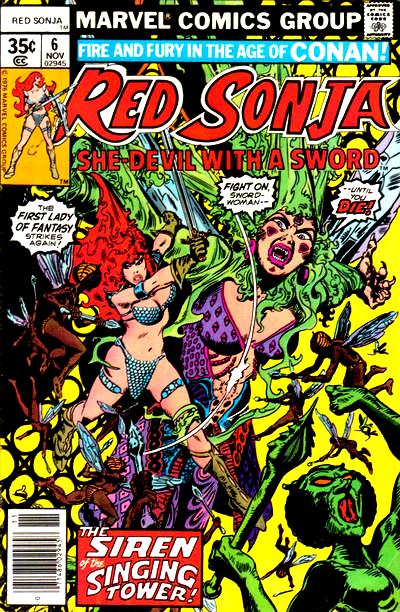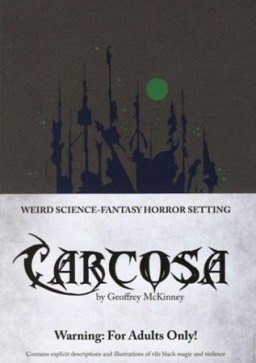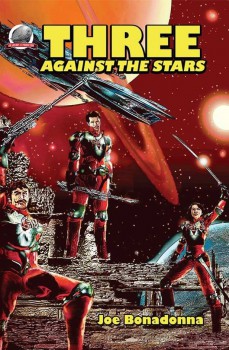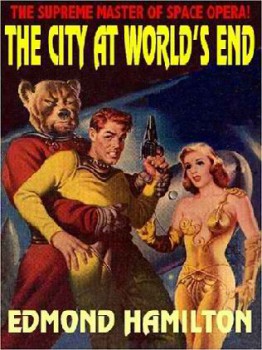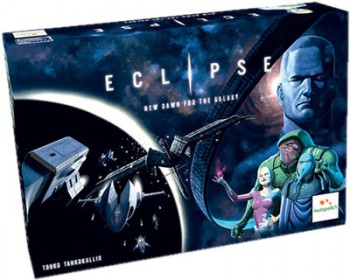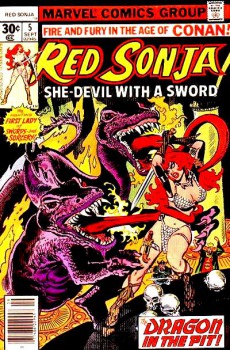 This issue follows up from the last one, in which Red Sonja vowed to find the leader of the Lake People, who was imprisoned in the Singing Tower (just called “the tower” last issue). She is still accompanied by Mikal, the mysterious traveler from issues three and four, who, rather remarkably, has not yet tried to seduce her. The issue opens with the two of them hiding behind their horses and watching a procession of warriors in the middle of the night.
This issue follows up from the last one, in which Red Sonja vowed to find the leader of the Lake People, who was imprisoned in the Singing Tower (just called “the tower” last issue). She is still accompanied by Mikal, the mysterious traveler from issues three and four, who, rather remarkably, has not yet tried to seduce her. The issue opens with the two of them hiding behind their horses and watching a procession of warriors in the middle of the night.
Now, if I wanted to trick someone into thinking a road is unoccupied, I wouldn’t leave a pair of saddled horses in plain sight. (“Hey, let’s hide behind the biggest clue we can find!”) Curiously, none of the riders seem to the notice the horses standing just to their right (no doubt experiencing the same lack of peripheral vision suffered by Imperial Storm Troopers and every single Doctor Who villain).
Of course, Sonja and Mikal are so pre-occupied with hiding in plain sight that they fail to notice the approach of the truands, who are basically forest-dwelling dwarves. Yes, this issue, Red Sonja fights a gang of unarmed dwarves. Unarmed dwarves dressed like pixies. Because, honestly, at this point the chain mail bikini isn’t politically incorrect enough.
Well, it should be no surprise that she easily defeats the little people, keeping one under foot for questioning. She asks him only one question: Where can she find the Singing Tower? His answer is that she should follow the dark riders. The dark riders she was following before the truands attacked. Meaning that the attack really served no narrative purpose other than to fill two pages. Ah well.
So Sonja and Mikal catch up with the riders, who seem to be moving just slow enough to make following them easy. Eventually, they lead our heroes into a valley, where they discover that (best Admiral Ackbar voice) it’s a trap. They are easily captured and Mikal is taken away. Sonja is taken to a bell tower, which is apparently the capital building of Bor Ti-Ki, the City of Bells. If you’re thinking the bell tower is the Singing Tower, Red Sonja makes the same mistake. But this is apparently a completely different tower.
…
Read More Read More
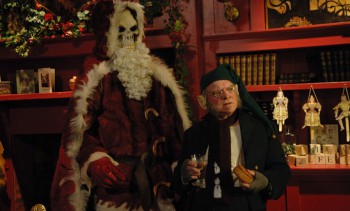 Having been all but dared, following my rather critical summation of The Color Of Magic (2008), to view a subsequent Pratchett adaptation, Hogfather (2006, made for TV), I confess I embarked on this quest with great trepidation, especially when I learned the production team responsible was essentially identical to that assembled for Color.
Having been all but dared, following my rather critical summation of The Color Of Magic (2008), to view a subsequent Pratchett adaptation, Hogfather (2006, made for TV), I confess I embarked on this quest with great trepidation, especially when I learned the production team responsible was essentially identical to that assembled for Color.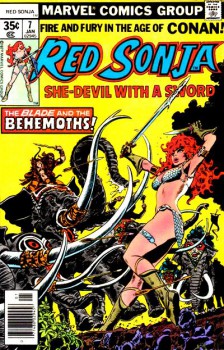
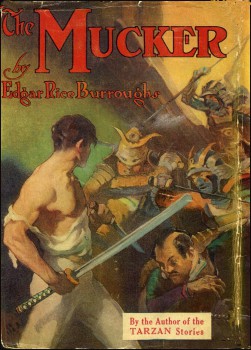
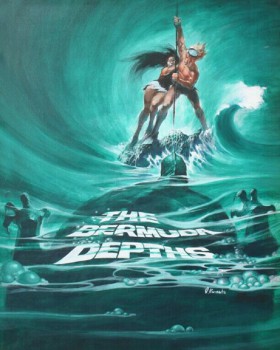
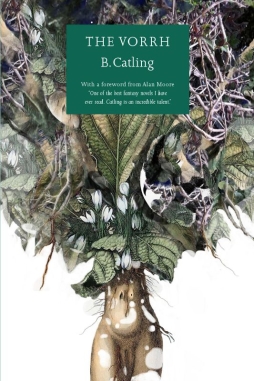 Raymond Roussel was a French surrealist writer who died in 1933, aged 56; one of his most famous works, Impressions of Africa, was a self-published novel (later turned into a play) depicting a fantastical African land based on no actual place, which contained a forest called the Vorrh. Late last year, the English sculptor and poet Brian Catling published his second novel, a story based on Roussel’s work: The Vorrh, first of a projected trilogy, described on its back cover as an epic fantasy. It’s a powerful book, precise and unexpected in its use of language and its plot construction, a dizzying and straight-faced blend of history and the unreal.
Raymond Roussel was a French surrealist writer who died in 1933, aged 56; one of his most famous works, Impressions of Africa, was a self-published novel (later turned into a play) depicting a fantastical African land based on no actual place, which contained a forest called the Vorrh. Late last year, the English sculptor and poet Brian Catling published his second novel, a story based on Roussel’s work: The Vorrh, first of a projected trilogy, described on its back cover as an epic fantasy. It’s a powerful book, precise and unexpected in its use of language and its plot construction, a dizzying and straight-faced blend of history and the unreal.